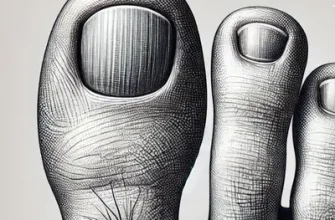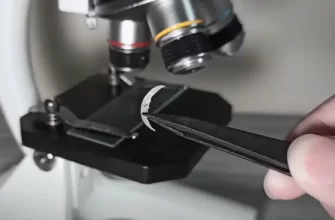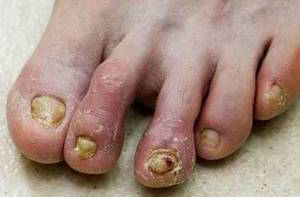The presence of a yellow tint in the toenails, especially the largest one, is frequently an indication of a hidden medical ailment. The primary reason for the yellowing of your big toenails is most commonly a fungal infection referred to as onychomycosis.
Common Causes of Yellow Big Toenails
- Fungal Infection: Onychomycosis is responsible for the majority of cases involving yellow toenails. Fungi thriving in warm, moist environments, such as those found in tight-fitting shoes, attack the nail, leading to discoloration, changes in texture, and thickness.
- Nail Thickness & Structural Changes: Changes in the shape or thickness of the nail can accompany the yellowing, indicating a progression of the fungal infection or other nail conditions.
- Other Symptoms: If your toenails exhibit additional symptoms like bleeding, discharge, pain, or swelling, this could be indicative of an infection or a more serious condition that requires medical attention.
It is crucial for individuals experiencing these symptoms to consult with a healthcare provider. Early diagnosis and treatment can prevent the infection from getting worse and spreading to other toenails or skin areas.
Preventions and Treatments
- Antifungal Medication: Treatments often include oral or topical antifungal medications prescribed by a doctor. These medications can help clear the infection, though they may take several months to be fully effective.
- Proper Foot Hygiene: Maintaining good foot hygiene is critical for preventing fungal growth. Keeping the feet dry and clean, changing socks regularly, and wearing shoes that breathe can help reduce the risk.
- Regular Nail Care: Trimming nails straight across and keeping them at a short length helps prevent fungi from taking hold under the nail.
- Avoiding Nail Polish: Sometimes, nail polish can trap moisture and worsen fungal infections. Going without nail polish can reduce this risk and allow the nail to heal.
If one suspects a fungal infection, or if any changes occur in the appearance of their toenails, it is recommended they seek guidance from a healthcare provider. Early treatment can lead to more successful outcomes and prevent potential complications.
FAQs
How to get rid of yellowing on the big toe nail?
Yellowing of the toenail can occur as a result of a fungal infection. There are multiple ways to treat this problem, including using antifungal creams, gels, or taking oral tablets. To ensure an accurate diagnosis and an effective treatment strategy, seeking medical attention from a doctor or a podiatrist is recommended.
What causes yellow thick toenails?
Usually, thick and yellow nails are caused by a fungal infection. However, other factors like psoriasis, nail injuries, or an underlying medical condition called yellow nail syndrome (YNS) can also contribute to this condition.
Do yellow toenails mean diabetes?
While having yellow toenails does not directly suggest diabetes, individuals who have diabetes are more prone to developing fungal infections in their nails. This can cause the toenails to become yellow, thickened, and fragile.
What vitamin deficiency causes yellow toenails?
Not having enough of a specific vitamin does not directly cause yellow toenails. However, if there are not enough vitamins like vitamin E and biotin, it can weaken nails, making them more prone to becoming yellow.
Are yellow toenails serious?
Yellow toenails may not always indicate a severe problem, yet they can serve as an indication of an underlying health issue that warrants assessment by a medical professional. The presence of a fungal infection causing the toenails to turn yellow can potentially extend to other nails and the adjacent skin, leading to discomfort and pain.
Do yellow nails mean liver damage?
The yellow discoloration of the nails is not a direct indication of liver damage. While jaundice, which causes yellowing of the skin and eyes, can occur in advanced liver disease, it is not typically linked to yellowing of the nails.
What happens if you don’t treat yellow toenails?
If not treated, yellow toenails due to a fungal infection have the potential to spread to neighboring nails and contaminate the nearby skin. Gradually, this condition can cause the affected nail to become thick, fragile, and misshapen. To avoid further complications, it is advisable to consult a medical professional or foot specialist for treatment.
Two Stories about Yellow Toenails
Kathryn had been noticing some unusual changes in her big toe nails- they had turned pale yellow and were slightly swollen. She shared her concerns with her husband, who suggested cutting off the affected toes as a solution. However, Kathryn insisted on getting a professional opinion and decided to visit a clinic instead. Thankfully, her toes were saved and the kitchen axe was hidden from her husband!
Jacob, a retired police officer from Iowa, had a similar scare when he felt a flea bite on his foot. Upon investigating, he noticed some alarming changes in his big toe nail. Initially, he panicked and considered calling for help on the radio. However, he composed himself and sought medical attention at a Chinese clinic. The outcome of Jacob’s situation is still unknown.
Conclusion
It is important to note that ignoring changes in toenails can potentially lead to serious complications and medical attention should always be sought. Accessing the appropriate medical care can prevent further damage and even save your toes!








